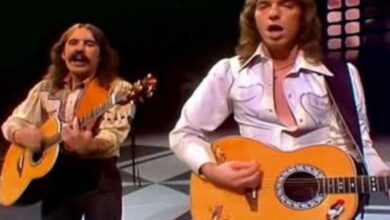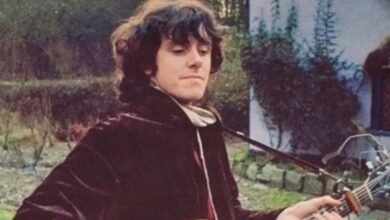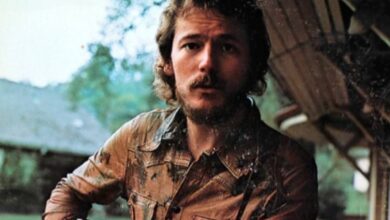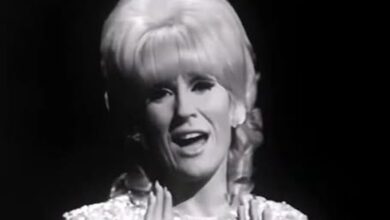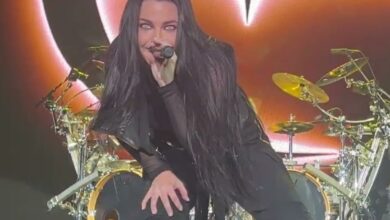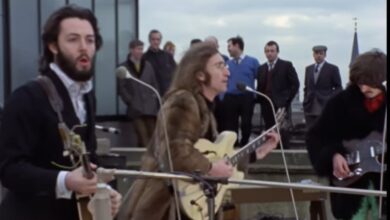The Hollies Spark a Frenzy with the Mesmerizing Rhythms of “Stop Stop Stop” in 1966
When “Stop Stop Stop” burst onto the airwaves in 1966, it was immediately clear that The Hollies had crafted something unforgettable. The song’s mesmerizing banjo riff, hypnotic rhythms, and infectious energy set it apart from anything else on the charts. Its irresistible groove and playful lyrics catapulted it to number two on the UK Singles Chart and number seven in the US, further cementing The Hollies’ status as one of Britain’s most inventive and successful pop acts of the 1960s.
The Hollies, formed in Manchester in 1962, were already chart veterans by the time “Stop Stop Stop” arrived. The band, led by the distinctive high harmonies of Allan Clarke and Graham Nash, quickly gained a reputation for tight vocal arrangements and a knack for catchy pop songwriting. Their early hits like “Just One Look” and “I’m Alive” showcased their ability to blend rock energy with pop precision—a formula that would reach new heights with “Stop Stop Stop.”
The inspiration behind “Stop Stop Stop” was a playful take on the experience of watching a belly dancer at a club—an unusual and exotic topic for a British pop group at the time. Written by Allan Clarke, Graham Nash, and Tony Hicks, the song captures the excitement and curiosity of the moment, filtering it through the band’s signature harmonies and rhythmic inventiveness. The lyrics, full of urgency and anticipation, help paint a vivid scene that listeners found both cheeky and charming.
One of the most distinctive features of the recording was Tony Hicks’s banjo, played through a tape delay to create an almost psychedelic, sitar-like effect. Producer Ron Richards encouraged the band to experiment in the studio, resulting in a sound that was completely unique among their contemporaries. The song’s driving rhythm, underscored by Bobby Elliott’s dynamic drumming, gave it an irresistible dance-floor energy that drew in listeners from the very first beat.
Upon release, “Stop Stop Stop” was met with enthusiastic acclaim. The song climbed rapidly up the charts in both the UK and US, becoming one of The Hollies’ biggest international hits. Critics praised its originality, with many singling out the banjo and the band’s exuberant performance. It also proved to be a crowd-pleaser in concert, where its infectious groove and singalong chorus never failed to ignite the audience.
Culturally, “Stop Stop Stop” marked a moment when British pop was increasingly open to experimentation and global influences. The Hollies’ blending of rock and Middle Eastern-inspired rhythms captured the era’s spirit of exploration and genre-mixing. The song’s success contributed to the wider acceptance of unconventional instruments and sounds in mainstream pop, paving the way for further innovation by The Hollies and their peers.
For The Hollies, the triumph of “Stop Stop Stop” was a turning point. It opened doors for international tours and boosted their profile in the competitive American market. The band’s willingness to take risks paid off, and their growing popularity led to appearances on major TV shows and bigger, more ambitious recording projects.
The influence of “Stop Stop Stop” can be heard in the way it inspired other artists to experiment with new rhythms and instrumentation. Its playful banjo and worldbeat undertones foreshadowed the psychedelic pop explosion that would soon sweep through the late ‘60s. Bands ranging from The Beatles to The Byrds took note of The Hollies’ innovative spirit, incorporating similar ideas into their own work.
The song’s appeal has endured over decades, and it remains a favorite among musicians and fans alike. Notable covers include renditions by the Swedish group Hep Stars (featuring Benny Andersson of ABBA) and live performances by Graham Nash during his solo tours, each bringing their own twist to the tune while respecting its original charm.
During the late 1960s, The Hollies navigated major changes, including the impending departure of Graham Nash to join Crosby, Stills & Nash. Yet “Stop Stop Stop” captures the band at the height of their collaborative powers—a testament to the magic that can happen when creative chemistry and musical daring intersect.
Even today, “Stop Stop Stop” continues to enjoy frequent radio play and remains a highlight of classic rock playlists. Its signature banjo riff is instantly recognizable, and its lively tempo invites new generations to discover the joy and energy that made The Hollies one of the era’s most beloved bands.
The song’s production, blending traditional pop craftsmanship with bold experimentation, helped set a new standard for what was possible in the recording studio. This spirit of adventure would go on to define The Hollies’ catalog and influence countless artists in the decades that followed.
Over the years, The Hollies have received numerous honors for their contributions to pop and rock music, including induction into the Rock and Roll Hall of Fame. “Stop Stop Stop” stands as one of their signature achievements, a shining example of how boundary-pushing ideas can become mainstream hits.
Ultimately, “Stop Stop Stop” remains a testament to The Hollies’ ingenuity and fearless approach to making music. Its infectious rhythms, memorable hooks, and playful lyrics have ensured its place as a pop classic, beloved by fans across generations. The song’s legacy is not just in its chart success, but in its lasting ability to get listeners up and moving—no matter how many years have passed.
For The Hollies, “Stop Stop Stop” was more than just a hit single—it was a statement of artistic confidence and curiosity. Its impact is still felt today, and its joyful energy continues to inspire musicians and listeners alike, proving that some songs really are impossible to resist.
